Introduction
Delia Owens’ “Where the Crawdads Sing” is a captivating novel that weaves together a coming-of-age story with a murder mystery. Set against the backdrop of the North Carolina marshes in the 1950s, the book follows the life of Kya Clark, a young girl abandoned by her family and forced to fend for herself in the wild. Owens’ evocative prose paints a vivid picture of the marsh, transforming it into a character itself, both beautiful and unforgiving.
About the Author
Delia Owens is a zoologist and conservationist who has spent years studying wildlife in Africa. Her passion for nature shines through in “Where the Crawdads Sing,” where the marsh becomes a central theme. Owens has faced controversy surrounding the book due to an unsolved murder in her past that some critics believe parallels the novel’s plot.
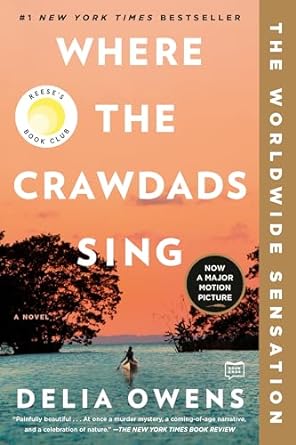
Why the Author Wrote the Book?
Owens’ background in studying wildlife and the natural environment inspired her to write a story that intertwines human emotions with the untamed beauty of nature. The novel explores themes of isolation, resilience, and the intricacies of human relationships.
Themes and Tone of the Book
The novel’s themes include loneliness, survival, the impact of childhood experiences on adult life, and the healing power of nature. It is characterized by a lyrical and evocative tone, painting a vivid picture of the marshlands of North Carolina.
Exploration of the Question “Where the Crawdads Sing”
The title, “Where the Crawdads Sing,” is a metaphor used throughout the book. Crawdads are a type of crayfish, and while they don’t literally sing, the phrase represents a place that is wild and untamed. For Kya, the marsh is her sanctuary, a place where she feels free and connected to nature.
Ending Explained (Spoiler alert)
The ending of “Where the Crawdads Sing” is ambiguous and leaves some things open to interpretation. Here’s a breakdown of the key points:
- Kya is acquitted: The trial for the murder of Chase Andrews concludes with Kya being found not guilty. The evidence against her is circumstantial, and the jury recognizes the prejudice she faced as the “Marsh Girl.”
- Tate returns: After initially leaving Kya following the trial, Tate eventually returns to the marsh, and they seemingly live happily ever after.
- The hidden truth: The novel reveals the truth about Chase’s death through Kya’s hidden journal entries, discovered by Tate after her death. These entries show that Kya planned to meet Chase by the fire tower and implies she caused his fall, which ultimately led to his death.
Interpretations of the Ending:
- Self-Defense: Some readers interpret Kya’s actions as self-defense. They believe Chase intended to harm her again, and she pushed him away in a moment of fear.
- Premeditated Murder: Others view Kya’s actions as premeditated murder. They see her manipulation of the situation and her understanding of the marsh as evidence of a deliberate plan.
- Survival Instinct: Another interpretation focuses on Kya’s survival instinct. Having experienced abuse before, she may have seen Chase as a threat and taken decisive action to protect herself.
The novel doesn’t provide a definitive answer, leaving the reader to decide the extent of Kya’s guilt or innocence. This ambiguity adds another layer of complexity to her character and the story.
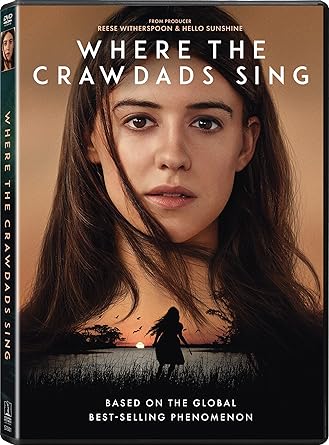
Diving Deep into Book vs. Movie Differences
The movie “Where the Crawdads Sing” makes some major changes compared to the book. Here’s a breakdown of some key differences:
Plot Structure:
- Book: The novel uses a dual timeline, weaving Kya’s childhood abandonment and struggles for survival with the investigation into Chase Andrews’ murder.
- Movie: The film starts with Kya’s arrest for Chase’s murder, which alters the audience’s perception of her from the outset.
Character Development:
- Kya’s Isolation: The book emphasizes Kya’s profound isolation and deep connection with the marsh. The movie lessens the impact of her loneliness.
- Relationships: The complex dynamics between Kya and the other characters, especially her family, are simplified in the film.
Themes:
- Nature Connection: The book explores Kya’s deep understanding and respect for the natural world. This theme is somewhat downplayed in the movie.
Additional Changes:
- Amanda Hamilton: The subplot involving Kya’s secret pen name, Amanda Hamilton, is missing from the movie.
- Ending: While both versions see Kya acquitted, the movie leaves the circumstances of Chase’s death more ambiguous compared to the book’s revelation of Kya’s involvement.
Overall, the movie captures the essence of Kya’s story and the beauty of the marsh setting. However, it sacrifices some of the book’s depth and complexity for a more streamlined narrative.
Similar Books
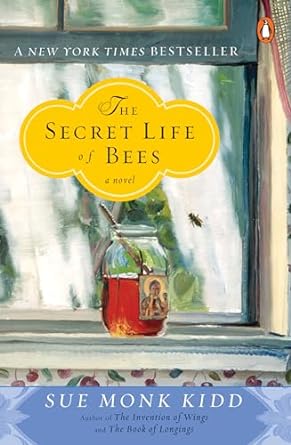
The Secret Life of Bees” by Sue Monk Kidd
Synopsis: Set in South Carolina in the 1960s, this novel follows Lily Owens as she seeks answers about her mother’s past, accompanied by three eccentric beekeeping sisters.
Tone: Warm and uplifting, blending coming-of-age themes with historical context.
Themes: Family secrets, female empowerment, racial tensions, and the search for identity.
Relevance: Like “Where the Crawdads Sing,” it explores the resilience of female characters and the transformative power of relationships.
Amazon Rating: 4.6
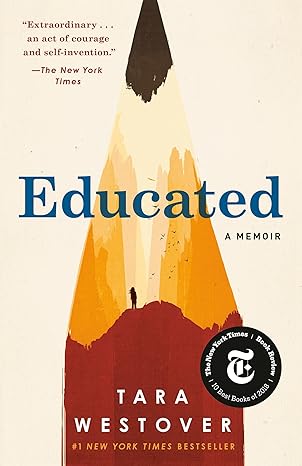
Educated” by Tara Westover
Synopsis: A memoir recounting Westover’s journey from a survivalist family in Idaho to earning a PhD from Cambridge University, exploring her quest for education and self-discovery.
Tone: Raw and introspective, confronting themes of family loyalty and personal growth.
Themes: Education, resilience, family dynamics, and the pursuit of knowledge.
Relevance: While not fictional like Owens’ work, it shares themes of survival and overcoming adversity.
Amazon Rating: 4.6
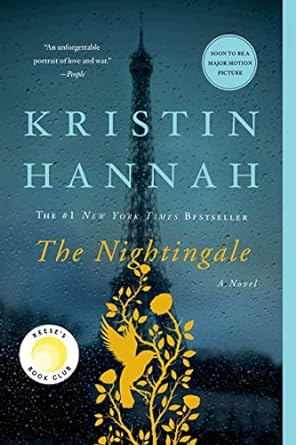
“The Nightingale” by Kristin Hannah
Relevance: It resonates with “Where the Crawdads Sing” through its strong female protagonists and themes of survival against adversity.
Synopsis: Set in France during World War II, this novel follows two sisters as they navigate the challenges of love, sacrifice, and resistance against the backdrop of war.
Tone: Heart-wrenching and poignant, exploring themes of bravery, love, and the impact of war on ordinary lives.
Themes: Sisterhood, resilience, wartime survival, and the human spirit.
Amazon Rating: 4.7

“Before We Were Yours” by Lisa Wingate
Synopsis: Based on real-life events, this novel explores the lives of siblings stolen from their families and placed in the Tennessee Children’s Home Society orphanage in the 1930s.
Tone: Poignant and emotional, blending historical fiction with family drama.
Themes: Family bonds, identity, resilience, and the enduring impact of trauma.
Relevance: Like “Where the Crawdads Sing,” it delves into themes of family secrets and the strength of the human spirit in overcoming adversity.
Amazon Rating: 4.6

The Great Alone” by Kristin Hannah
Synopsis: Set in the 1970s in Alaska, this novel follows the Allbright family as they struggle to survive in the wilderness while grappling with the effects of PTSD and domestic violence.
Tone: Atmospheric and intense, exploring themes of survival, love, and resilience.
Themes: Isolation, family dynamics, survival in harsh environments, and the healing power of nature.
Relevance: It shares themes of isolation and resilience in challenging environments, akin to Kya’s experiences in “Where the Crawdads Sing.”
Amazon Rating: 4.6
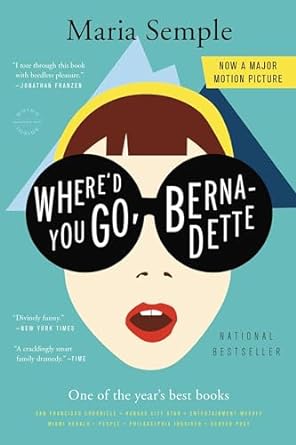
“Where’d You Go, Bernadette” by Maria Semple
Synopsis: A comedic and heartfelt novel that follows 15-year-old Bee as she searches for her eccentric and agoraphobic mother, Bernadette, who disappears before a family trip to Antarctica.
Tone: Quirky and satirical, blending humor with exploration of family dynamics.
Themes: Mother-daughter relationships, identity, creativity, and the complexities of modern family life.
Relevance: While lighter in tone, it explores themes of loneliness and the search for identity, resonating with the emotional depth found in “Where the Crawdads Sing.”
Amazon Rating: 4.2
These are just a few examples, and there are many other novels that share similar themes and tones with “Where the Crawdads Sing.”
After considering the book and movie’s portrayal of Kya, do you believe she is innocent or guilty in Chase Andrews’ death? Why or why not?



Leave a Reply